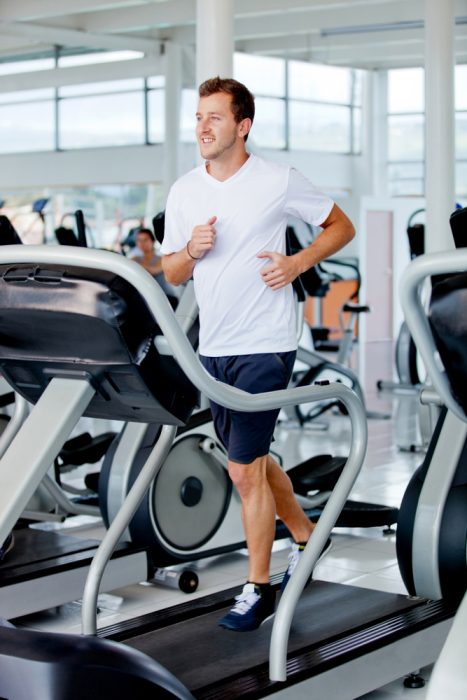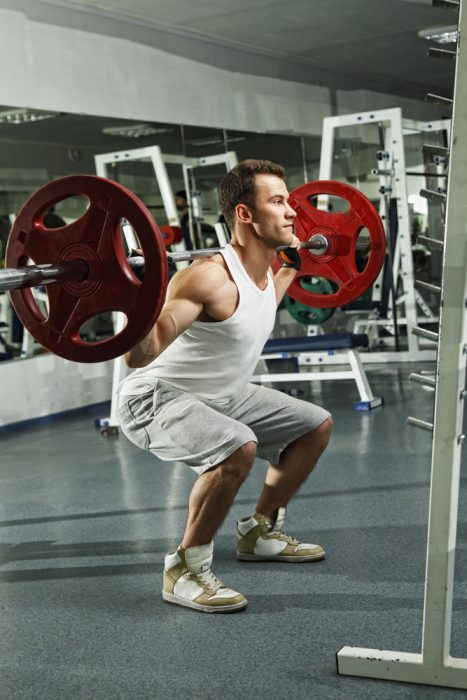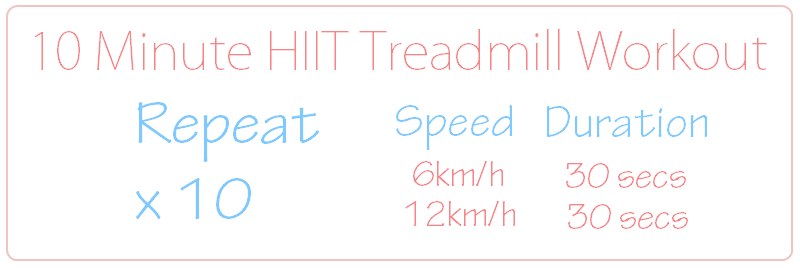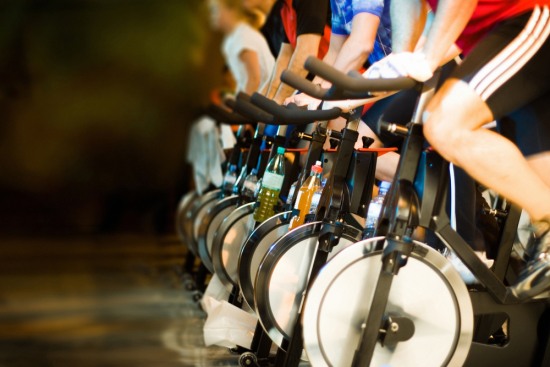HIIT Treadmill Workouts: A Complete Guide
What is HIIT?
[one_half]HIIT (High Intensity Interval Training) is essentially a form of cardio training designed specifically to maximise your ability to retain muscle, while still burning calories and fat.
Before HIIT, the majority of treadmill workouts were created at more of a consistent speed, going through the motions until you reached your target time or distance.
The only real differences in speed were most likely towards the beginning or end of a workout, when warming up and cooling down.
What sets HIIT apart is the variation in intensity. Rather than running, walking, or jogging at a set pace for the duration of your workout, periods of faster running speeds or higher inclines are now interspersed with periods of slower speeds and lower intensity.[/one_half]
[one_half_last]

[/one_half_last]
In this feature, we’re going to take a look at the HIIT Treadmill Workout options in more depth, including how they can be adapted to your specific treadmill, and how you can start designing your own effective workout right now!
Related: Matrix T3X Treadmill Review
[divider]
The difference between IT and HIIT
Before going any further it’s important to address an important difference between HIIT and IT (Interval Training).
While you may find workouts scattered around the internet and in magazines promoting workouts of 60 minutes or more, these will most certainly be interval workouts, not HIIT.
The difference is that intervals can be performed at any level of intensity. Usually, the only requirement is that you change the running speed at fixed intervals. True HIIT means you will be sprinting with all of your effort for a set period of time, followed by a short rest.
If you find you are able to go much beyond 30 minutes, the chances are you need to increase the intensity of your ‘work’ sections.
[divider]
Benefits of HIIT Treadmill workouts
So we now know what HIIT workouts are, but what exactly are the benefits? How do you know if this style of training is going to help you achieve your own personal fitness goals?
[one_half]1) Increased metabolic rate and fat burning
One of the main reasons for the periods of high intensity training, is the elevated heart rate and metabolic rate.
By keeping your heart rate up and pumping more blood and oxygen around your body, you can increase the amount of calories you burn, during both the recovery and training periods.
But it’s not just what happens in the gym that makes HIIT so different. It’s what happens during the 24 hours that follows.
There have been numerous documented studies that show maintaining a high metabolic rate can increase fat loss over a prolonged period of time, when combined with exercise.
Just look at how many pro bodybuilders rely on eating 6 to 10 meals every day.[/one_half]
[one_half_last]

[/one_half_last]
Yes it’s partly so their body can take in the amount of protein they need, but it also helps keep their metabolism at a much higher rate than your standard 3 meal per day plan.
Wouldn’t you like to burn more calories, even after you finish your workout, and simply by changing to a different style of training?
2) Workouts can be developed to suit your timeframe
Another clear benefit of a HIIT Treadmill Workout is that you don’t have to spend hours on the machine.
If you’re pushed for time and can only spare 30 or even 15 minutes to workout, there are still effective training routines that can help you use the time efficiently.
[one_half]3) Easier to combine with resistance workouts
For many people, the attraction of lifting heavy weights is often too much to actually consider putting together an effective cardiovascular workout.
We all know that cardio is an important part of any balanced fitness plan, but after 60 minutes (or more) of weight training, it’s often difficult to find the time for some cardio.
The truth is that once you know how to structure and add some effective variation, HIIT cardio workouts can be added to the end of every workout, while having a minimal impact on their duration.
Adding in some HIIT post-workout is also an excellent way to take advantage of your already depleted carbohydrate stores, helping to burn more fat.[/one_half]
[one_half_last]

[/one_half_last]
(Best used only on a ‘cutting’ or fat loss diet, rather than bulking)
It’s also worth noting that many workout plans you see on sites such as Pinterest wouldn’t include warming up or cooling down, which are both important parts of any workout if you want to avoid injury.
We would recommend 2 to 3 minutes of walking or light jogging before starting, and after finishing any of the workouts mentioned.
So now we’ve covered a few of the benefits and actually backed them up with some links to medical studies, let’s jump into what makes an effective HIIT Treadmill workout.
[divider]
What’s the optimum difference between high intensity and low intensity speeds?
[one_half]A question that often gets asked when putting together a new interval workout is; ‘What sort of variation should I be looking for when switching between periods of high and low intensity?’.
It’s difficult to provide a clear answer on this, as it will be based almost entirely on your own personal ability. Your physiology is also going to come into play, with running stride length influencing how much of an influence the various belt speeds have on your heart rate.[/one_half]
[one_half_last][ads2][/one_half_last]
Something we always recommend is setting up some simple ‘trial and error’ style tests. Once you have your workout all planned out, it’s probably going to take a couple of trial runs to find the right speeds for each section.
Try to find a speed for high intensity that really pushes you to keep up, while the lower speed should allow enough recovery to go all out on the next period of high intensity, and complete the required rounds.
[divider]
Balancing your ‘work’ and ‘recovery’ periods
The next factor worth taking a look at is the time balance. We know that HIIT workouts are based around intervals, but how long should each interval be, and how does the duration change with different levels of personal fitness?
While there are some exceptions, it’s generally best to scale the work periods with the recovery periods based on the following ratios:
[checklist]
- Beginner – 1 : 2 (Work : Recovery)
- Intermediate – 1 : 1 (Work : Recovery)
- Advanced – 2 : 1 (Work : Recovery)
[/checklist]
This essentially means that as someone that’s new to high intensity interval training, it’s best to start with a workout that your workout should allow you twice the amount of recovery time as you have ‘work’ time.
A popular example would be a 10 minute workout that was broken into 10 x 1 minute rounds. Each round is then divided into 60 seconds, of which you would spend 20 seconds at a high intensity (work) followed by 40 seconds at a lower intensity (recovery). This gives us our 1: 2 ratio.

If you don’t find this challenging enough, or you have previous experience with HIIT, you might want to try increasing the work periods and lowering the amount of rest allowed per set.
Using the same 10 minute workout as an example with the 10 rounds of 60 seconds, this now means that you would have 30 seconds of high intensity, followed by 30 seconds of lower intensity. Repeating this 10 times would give us our workout, and provide the 1 : 1 ratio.

The third timing setup that’s worth considering is where you actually train for a longer period of time at higher intensities compared to the amount of time you spend recovering.
In our 10 minute example, this means 10 rounds of 60 seconds, with 40 seconds in each round being high intensity, and 20 seconds being lower intensity for recovery. This would create our 2 : 1 ratio.

Using this ratio of 2 : 1 (work : rest) has been shown to produce the best results for high intensity workouts, for people with a high level of physical fitness.
The Journal of Strength and Conditioning conducted a study which measured the optimum resting time between periods of high intensity running that were 4 minutes in length. Study author Matt Laurent, PhD, CSCS found that:
“We concluded the 2:1 was the right dose because when the recovery was reduced to only 1 minute, the levels of intensity were blunted.”
“In addition, when we gave them 4 minutes of recovery, their levels of intensity were not any higher than with 2 minutes. Therefore, we concluded that 2 minutes was enough time to recovery optimally while minimizing the overall time of the session as well.”
Even with these findings, it’s worth bearing in mind that the study was conducted on people who already had high levels of fitness. It’s best to work up to this level by trying the other ratios first (1 : 2, 1 : 1), then use the one that works best for you.
[divider]
When to start adding in other factors
When it comes to putting together an effective HIIT cardio workout, it won’t always be about varying the duration of each period.
While this can certainly still produce results, it’s often more challenging to start thinking about adding in some new factors altogether.
Some of the most popular options are:
[checklist]
- Varying the duration of the entire workout
- Varying the high and low speed levels (Pyramids)
- Adjusting the incline of the treadmill (Hill climbs)
- Mixing together 2 or more of the above (e.g. Pyramid the speed while also adjusting the incline)
[/checklist]
With many people choosing to supplement their outdoor running with indoor treadmill workouts, this can be an excellent way to closely match your different methods of training.
If for example your outdoor run takes you up a steep hill climb, this is something that can be recreated using the incline setting of your treadmill.
Fortunately, many high end machines now allow you to setup your own custom cardio program before you even step foot on the running belt. This means you can have your incline and speed settings automatically adjust according to your workout plan, leaving you to focus entirely on your run.
10 Minute Speed Varying Workout

20 Minute Speed Varying Workout (Inverted Pyramid)

20 Minute Speed, Time, Incline Variation (with inverted rest speed pyramid)

[divider]
Supplementation and meal planning before the HIIT workout
[one_half]Depending on the duration of your workout, you probably don’t want to be thinking of having a solid food meal within a couple of hours of your HIIT session.
That being said, you are going to need sufficient fuel to be able to perform these workouts to the best of your ability, and maintain the high intensity periods for their full duration.
Glycogen stores are the main reason for having the energy that you do while your train. But with such high intensity exercise, carbohydrates are utilized much faster, leading to a decline in glycogen levels.
This means that you either have to prolong the depletion of glycogen (usually by eating large quantities of food high in carbohydrates, which isn’t practical for fat loss), or by providing your body with another source of energy.[/one_half]
[one_half_last] [/one_half_last]
[/one_half_last]
Fatty acid oxidation is one way to provide another energy source for your training, which then slows how much glycogen is required to fuel your high intensity sprints.
Look for supplements that include L-Carnitine, which is one of the naturally occurring amino acids. Used to transport fatty acids to be metabolized, this will also assist in the release of stored body fat into the bloodstream for energy.
Caffeine is a natural stimulant that could also help you maintain increased alertness and energy levels, at the same time as providing additional fat loss benefits.
While there are numerous supplement companies now offering caffeine as part of a fat loss stack or on its own in pill form, green tea remains one of the best natural sources.
A study published in the American Journal of Clinical Nutrition even found that ingesting green tea extract helped men burn 17 percent more fat during a 30-minute cardio workout.
[divider]
Post HIIT workout nutrition
[one_half]Similar to pre-workout nutrition, what you eat after a HIIT workout will depend on your overall fitness goals.
Based on a goal of fat loss, you will want to be keeping your insulin levels suppressed and growth hormone levels elevated. Both are possible by managing your carbohydrate intake.
There’s a 30 – 45 minute window after your workout where your body will be much more sensitive to nutrient delivery.
It’s important to make sure you aren’t taking in too many carbs, but also to replenish muscle glycogen and stimulate tissue repair through protein synthesis.
While solid food is certainly an option (chicken salad is excellent), modern protein shakes with EFAs (Essential Fatty Acids) are also popular.[/one_half]
[one_half_last] [/one_half_last]
[/one_half_last]
Try to find a shake that’s rich in amino acids such glutamine, as this will help to replenish your energy stores at the same time as extending the fat loss effect of your workout.
It’s important to make sure that your body gets the nutrients it needs in some form before the 45 minute post workout window expires, if you want to optimize fat loss and recovery.
If you’re not sure which foods to choose, we also have a guide to 20 high protein foods which are ideal for a post workout meal.
[divider]
How often should you perform HIIT?
As with any form of training, how frequently you perform HIIT should be adjusted according to its effectiveness and how much it is helping you to achieve your goal.
Feel free to mix the schedule around, but it’s often best to include this style of cardio 2 to 3 times per week to start with (on non-consecutive days), alongside 1 or 2 sessions of normal cardio – nothing too intensive.
If your goal is fat loss, then get out the callipers and tape measure to get a clearer idea of how much muscle you are retaining and how much fat you’re burning.
If you’re losing too much muscle along with the fat, then it might be worth either increasing your protein intake, or reducing the duration of one of your HIIT sessions to see if this has an effect.
If on the other hand, you aren’t seeing the best results, try increasing the number of times you perform HIIT to 3 or 4 times per week.
[divider]
Conclusion
[one_half]While we have tried to cover all the aspects we could think of regarding an effective HIIT Treadmill workout, please feel free to ask any questions in the comment section below.
Also, we would love to hear some of your own interval style workouts, and how beneficial they have been towards your own fitness goals.
If you’re bored of your usual treadmill workout plan, it’s definitely worth giving HIIT a try![/one_half]
[one_half_last]
[/one_half_last]



